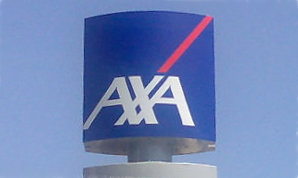Run-off or winding-up of portfolio
The great potential granted to it has aroused the desire of new players, portfolios' winding-up specialists who are positioning in growing numbers on this niche expected to become a major activity in the insurance business.
Run-off: Definition

Run-off or winding-up of portfolio consists in managing the incurred or possible claims of the insurance companies having ceased to write policies in one or several classes of business.
Ceasing to write any new business deal on a risk portfolio triggers the processing in real time of technical reserve stock until their total extinction. Run-off operation could take several decades depending on the class of business written.
For the companies, the objective is to fulfil their commitments towards their insured either by managing them on their own or by entrusting them partially or fully to third parties in return for fees.
In case of transfer to a third party, the financial and legal management of the run-off portfolio is carried out outside the usual commercial relationship with the insured, as this relationship ceases to exist upon the insurer's decision to put an end to underwriting process.
Run-off: Brief historical background
The start of run-off dates back to the 1980s in the United States when the concept of the specific management of business close to termination began to be considered by corporate leaders. The trend, by then, was to put in place within company a unit in charge of its management until files' extinction.
At the beginning of the 1990s, the phenomenon was picking up considerably with the rise in merger-acquisition trends. The tense market context obliged companies to disengage from this activity and to favour recourse to third party managers and consultants specializing in run-off, an activity that is becoming a profitable sector in the insurance business.
Towards the mid 1990s and the start of the 2000s, run-off has speeded up. Most of the large companies have been redirected toward the creation of internal bodies of run-off portfolios' management, endowed with more sophisticated technical and management tools. The dominant trend was to maintain the activity within the company.
Currently, the generalisation, the development and the acknowledgement of run-off as a value segment make of it a business that offers a wide range of services.
Upstream of run-off
Several reasons account for the institution of a fund for businesses close to termination requiring run-off procedure.
- An under-appraisal of risk and of its accumulation during underwriting. The cases of asbestos, the multiple liability actions by social representatives, environment, medical errors, tobacco-related illnesses, and most recently accounting scandals.
- An under-rating of policies resulting from competition.
- A defective operational management of the contracts results in the lack of debts' and of treasury's control.
- A rise in the loss ratio due to the occurrence of devastating natural catastrophes.
- A decline in the solvency of the company due to the deterioration of its financial situation, the downgrading of its rating or/and the fall in the value of its shares.
- A merger-acquisition move of the company which is followed by a change in underwriting policy and strategy, being directed toward a redeployment on the market or more rewarding risks, which usually brings some products underwriting to a halt.
- In reinsurance, recourse to run-off does not only meet a management rationale but also to the principle of risk intensity. The commutation of a contract between the insurer and the reinsurer gives the possibility to the one who retakes the portfolio in run-off to draw profitable margins.
Run-off: Terms of implementation
Any option to put a portfolio in run-off requires a preliminary accurate assessment of the cost and profits of the formula through inspection and auditing. Dealing with risk transfer, its cost has an incidence on the decision because its price varies according to the products.
Winding-up commercially-dead contracts may take several forms.
- The internal management of terminating policies is entrusted to specific teams.
- The internal management of terminating portfolios is a solution that requires management tools corresponding to a wind-up portfolio. The management could be scattered through the different subsidiary companies or centralised within a unit that is separated from the active structure.
- Risk transfer consists in entrusting the partial or total management of the claims run-off to specialised companies in return for fees. The formula involves recourse to consultancy firms that provide technical and legal assistance, especially when it comes to international dimensions.
- The mixed solution consists in speeding up the contract termination while maintaining control over one's commitments, and in outsourcing the back-office activities pertaining to logistics, accounting and the recovery of debts.
- The exclusion of risks from the balance sheet through a financial reinsurance. The reinsurers have developed management services on behalf of the cedants through the purchase of full portfolios in run-off.
Objectives of run-off
 The primary objective of run-off is to put an end to the commitments underwritten by the insurers or the reinsurers with a view to gaining time and money, that is, in other terms, to ease the company's financial situation and relieve it of the burden of a dead business. It means terminating the contract in order to disengage the insurer who decided to stop underwriting a category of risks. Within a sane perspective, the company shall be aiming at the portfolio run-off bonuses by avoiding mali.
The primary objective of run-off is to put an end to the commitments underwritten by the insurers or the reinsurers with a view to gaining time and money, that is, in other terms, to ease the company's financial situation and relieve it of the burden of a dead business. It means terminating the contract in order to disengage the insurer who decided to stop underwriting a category of risks. Within a sane perspective, the company shall be aiming at the portfolio run-off bonuses by avoiding mali.
A wise management of a run-off portfolio may be a source of profits. It rests on the principle of time and resource savings. It means closely negotiating contracts by reducing their duration and the reserves.
The main advantages of run-off
- Redefining the activity towards strategic objectives.
- Alleviating the balance sheet and reaching a compromise between assets and liabilities.
- Cutback in staff expenditure to get margins.
- The benefit of an objective outlook on the activity.
- A planning of payments that is likely to allow the investment of assets in accordance with the liabilities.
The market
The run-off market
- A market worth 94 billion USD in the United States in 2005
- The United States and Great Britain are managing almost 90% of the world's run-off market
- Annual growth: 10%
- The world's potential market estimated at 300 billion USD in 2004
The market is displaying a good health and a strong growth in the United States where it is estimated at 94 billion USD in 2005 and in Great Britain where its growth is at 5% per year. The two countries alone are managing about 90% of the world's run-off market.
On continental Europe where it is only starting, the run-off segment is attracting numerous actors: bankers, experts, former insurers and reinsurers converted into hunters of terminating contracts whose financial flow is deemed almost equivalent to that of property premiums.
The annual growth of run-off market amounts to 10%. The run-off world market is estimated at 300 billion USD in 2004. 22% of the run-off businesses are entrusted to specialised firms.
In order to face the market's evolution, the business is getting organised
In the United Kingdom, the Association of Run-off Companies (ARC) has existed since 1998.
In the USA, a group of insurers and reinsurers have created in 2005 the Association of Insurance and Reinsurance Run-off Companies (AIROC) based in New York, and which currently includes more than 30 members.
Within AIROC, 11 committees are in charge of assessing practices, designing the appropriate tools and measuring the market's performance.
The same move is noticed in Europe where in 2005 a run-off syndicate was set up : The Syndicat Européen de Gestion des Sinistres (SEGS), which federates about thirty players.
Run-off: The main players
The specialists
- Equitas
- Claims Management Group Limited
- Axa Liabilities Management
- Swiss Re
Following the bankruptcy of several underwriters' syndicates in 1992, Lloyd's set up Equitas in London, an ad hoc management body endowed with 40 billion USD in reserve to settle, among others, the asbestos files.
Being a subsidiary of Zurich Financial Services, the British Claims Management Group Limited (CMGL) is a claims management specialized company which stands as the second worldwide run-off service provider with 6 billion USD in managed assets.
Across the Atlantic, most of the giants (AIG, Berkshire Hathaway, Chubb, Cigna, St. Paul) dropped the businesses of their terminating portfolios. According to their strategy, run-off mastery becomes a new tool for change management.
 |
In France, in 2001 AXA created AXA Liabilities Management (AXA LM), a specific body in charge of centralising and managing the run-off of its subsidiaries. It employs 300 people and manages long-term liabilities estimated at 4 billion EUR (5.02 billion USD).
Swiss Re insurer has become one of the world's large run-off specialists. Its Risk Solutions department is practising all types of run-off : reinsurance of liability transfer, portfolio buyout, internal management through specific bodies.
Run-off, the market of the future
Boosted by the current evolution of the market and the growing mood of merger-acquisitions, run-off accounts for a considerable potential, a new seam of the business where more and more operators are engaging. The trend is justified by the evolution of even the insurers' and reinsurers' business which are focusing on future strategies in search for profitability and the conquest of new markets.
In this international context characterized by competition and the race for rating, companies do not think twice isolating their terminating portfolios and handing over their management to subcontractors.